The Home Management House Babies
A Controversy at Eastern Illinois State Teacher's College
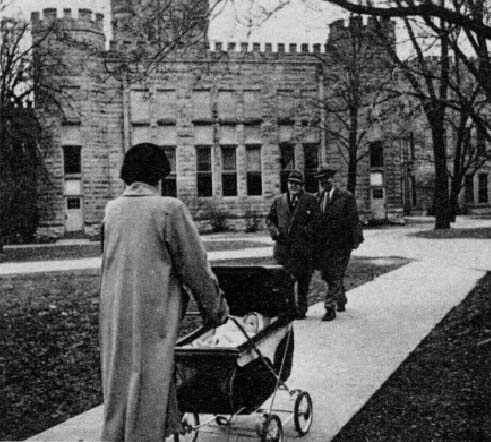
In 1913, the department of “Domestic Science,” what would later be called Home Economics, was started at Eastern Illinois State Normal School. Eventually, the school expanded, as did its degree granting offerings, a four-year degree programs. In 1921, the school's name changed to Eastern Illinois State Teacher's College. Under the administration of President Robert Guy Buzzard, faculty were added to the staff as the student population grew. In 1950, Dr. Ruth Schmalhausen was hired to the Home Economics Department, and a program was established that would bring the college national attention.
Dr. Schmalhausen was interested in building the Home Economics department at Eastern to be similar to other universities around the country. She argued that the practical approach of studying home economics was necessary. “Rural Education” students at Eastern had the opportunity to observe schools in the rural areas of Coles County, and field trips were offered for geology and history majors to significant locations in Indiana and Kentucky. These were popular outlets for such fields, but the department of Home Economics did not have such opportunity for practical teaching. Dr. Schmalhausen pushed for the building of a home management house on the campus of Eastern Illinois State Teacher's College.
Building on campus had ceased during World War II, but as President Buzzard finished his tenth year at Eastern, he summarized his hopes for postwar building:
“First in the building program is the badly needed library, a new training school containing both grades and high school, other plans include a cafeteria… home management house, and the construction of two dormitories.”
By the fall of 1948, the projected long range planning for the College included: “...a Home Management House, for the use of the Home Economics Department, to be erected at the northwest corner of Fourth and Grant Streets.” After the hiring of Dr. Schmalhausen, the home management homes were approved by the Teacher College Board of Illinois, and two ranch style home management houses were built in 1950.
Eastern Illinois State Teacher's College Home Management houses. North and South Units, circa 1950.
On the campus of Eastern Illinois State Teacher's College, students could ‘learn by doing' in these domestic laboratories. The two home management ranch houses were utilized from 1952 until sometime in the late 1960s. The houses were identical in layout, known simply as the North unit and the South unit. The campus newspaper, The Eastern State News, ran an article on June 18th 1952 that described in detail the interiors of the new campus additions:
“The house has seven rooms in each unit, two student bedrooms, a nursery, director's room, living room, kitchen, and utility room. The living room in the south unit is furnished with conventional furniture while the north unit is furnished with modern furniture. The living room of the south unit is green with light gray carpeting… The house has a nursery which is expected to be used next fall. Part of the training of the girls is childcare. This summer the girls are trying to contact an orphanage to “adopt” a child under one year of age for care of him or her at the house… The nursery is in blue but as of yet has no furniture… The houses will be opened next fall for public inspection.”
Dr. Schmalhausen had observed other college campus home management houses, and was excited to make Eastern's domestic curriculum just as progressive. Although not greatly documented by surviving curriculum guides, it was a popular practice for home management houses to care for orphaned children in these practice settings. It was believed to be an ideal situation as the school would assist the child, and the child would give valuable lessons to the students.
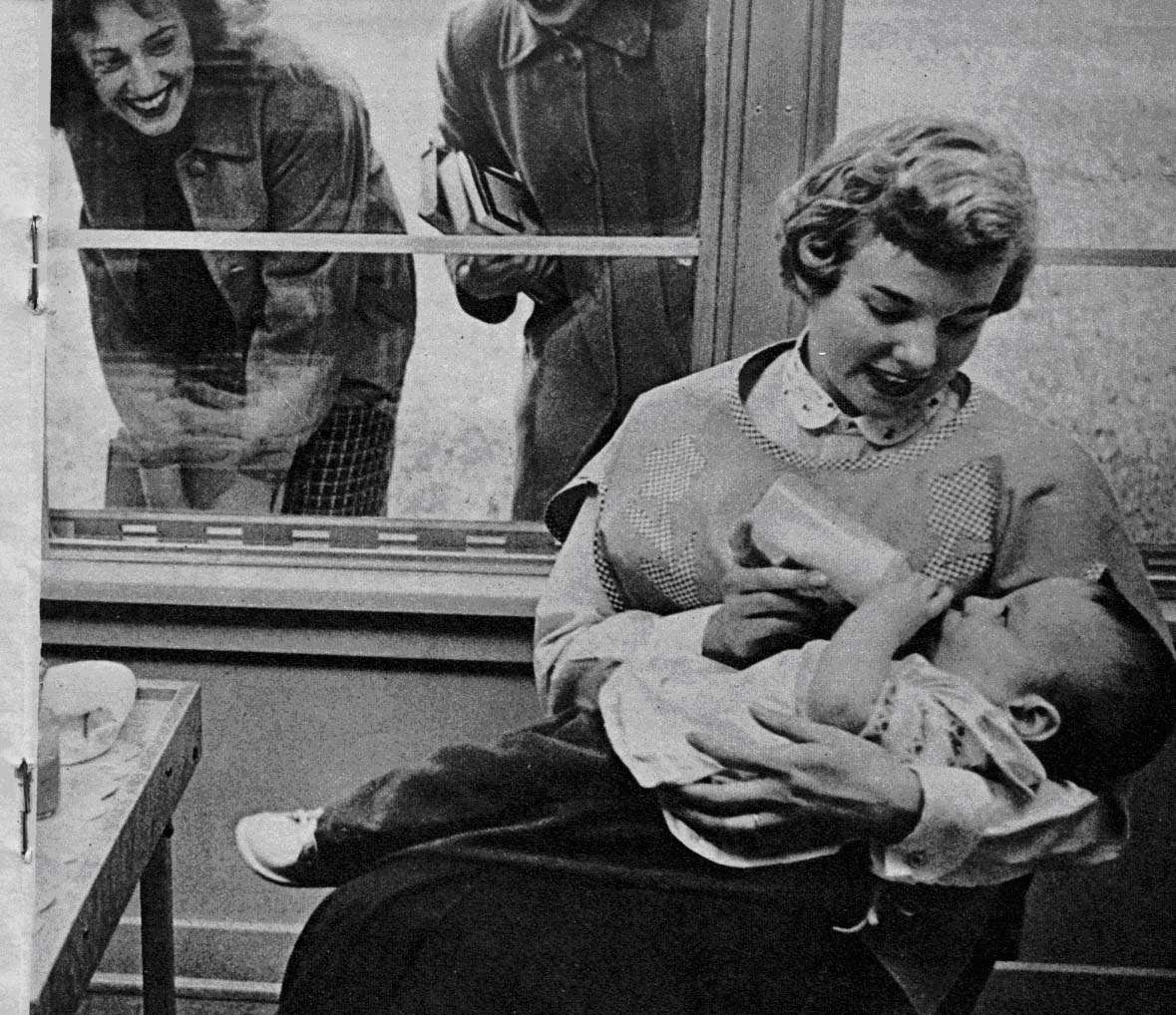
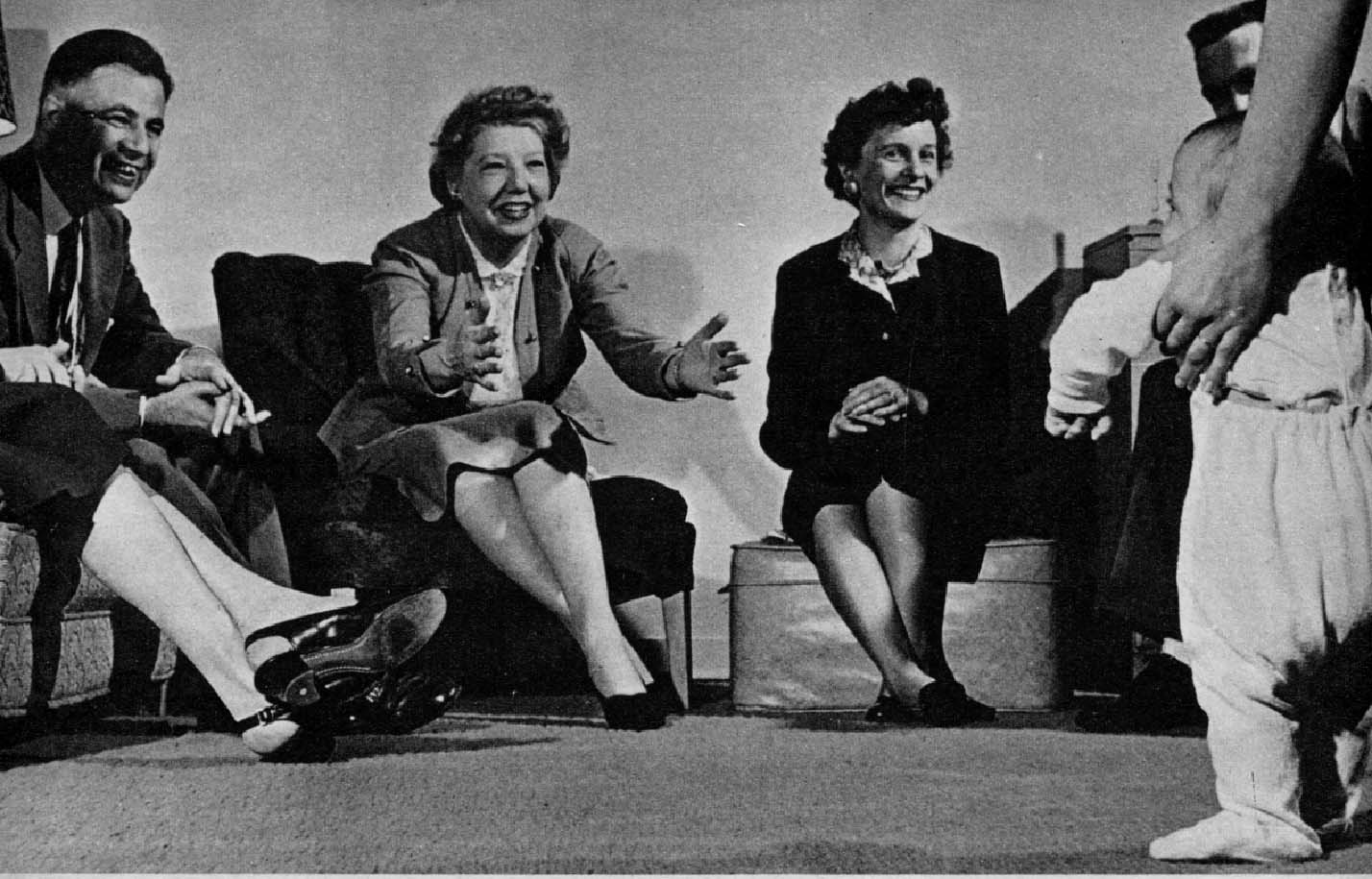
At Eastern Illinois State Teacher's College, each year twelve home economic students lived in the ranch home management houses. They gained experience managing the domestic aspects of homemaking and care for an infant. Beginning in 1952, the home management house on campus was able to find children to take in, observe, and care for. These babies were not wards of the state; rather, they were the sons and daughters of unwed mothers or low-income parents who were unable to adequately care for their young babies. In 1952, in search of an infant to become the first home management baby in Illinois, Dr. Schmalhausen requested the help of the Superintendent of Illinois State Child Welfare Division, Dr. Roman Haremski. He indicated his concern, and would not help to place a child with the College. Dr. Schmalhausen had observed child care in a home management house at Penn State several years prior, and was determined to find a child to care for. She went to private organizations, and finally found a mother in need of assistance through the Salvation Army Home in Chicago. The baby girl was two-week-old Margaret Ann. She was given the surname “North,” corresponding with the home management house unit she would live in.
A year later, the arrival of a new baby to campus lead to national controversy.
David “North” was the child of an Indiana unwed mother. He was born sickly and premature. His mother's need to work meant she was unable to keep her newborn. The college's program was brought to her attention, and she agreed to “loan” her baby to Eastern for the academic year. With this agreement, she was able to visit her baby and had frequent correspondences with Dr. Schmalhausen about the development of her son. The arrangement was thought to benefit everyone involved, the girls in the home management home, the baby, and its mother.
In early January of 1954, the St. Louis Post-Dispatch ran a short article discussing Eastern Illinois State Teacher College's practice of keeping a “loaned child” on campus for the purpose of educating Home Economic students. The article was based on an interview with Dr. Schmalhausen, which discussed the College's acquirement of their second child to live in the home management houses during the 1953-1954 school year. Dr. Roman Haremski, Superintendent of Illinois State Child Welfare Division, had been unaware that Dr. Schmalhausen was successful in finding a child for the program, and was outraged at having been uninformed. Although the practice of having live children in home management houses was not uncommon, it had not previously been implemented in the state of Illinois. After becoming aware of a child living on campus in Charleston, Haremski ordered Child Welfare Services to begin an investigation. He was concerned for the child's well being and appealed to child psychologists to support his arguments.
The controversy was a clear two sided argument. Haremski and the Child Welfare Services believed that a child's environment in the first year of life was pivotal to its development of character. They argued that being separated from its mother would be damaging to a child's personality, but to be surrounded by twelve mothers would be even more confusing. Haremski thought the baby was being used as an experiment in the study of home economics. He was also extremely concerned with the lack of a male father figure in this baby's situation, especially for a baby boy. He threatened to intervene legally, arguing that Eastern Illinois State Teacher's College did not hold a license to act as a child welfare agency.
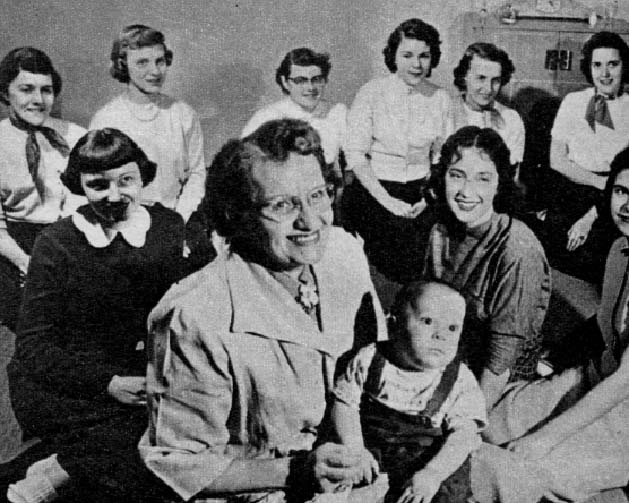
Dr. Schmalhausen's argument countered each of Haremski's points. The love and care the baby received from its “twelve foster mothers” would be much less damaging to his overall personality than being returned to its unwed mother, only to be placed in a group home. She indicated that the problem of not having a father figure would still exist in either situation, and that David's condition on campus at least provided him with the care of doting mothers. President Buzzard came to the program's defense, as did Dr. William K. Hite, the pediatrician who was the baby's doctor in Charleston. Hite stated:
“The infant boy is in excellent physical condition. He has received physical care which is far superior to that given in the best foundling homes and in most American homes. Furthermore he is loved, which is the basic factor in the healthy developmental environment. This child has benefited tremendously from the good start he is receiving and will show it for years to come…”
The state investigation into Eastern's home management baby seemed to occur in a heated atmosphere of American history. Domesticity was being professionalized, and there was a rise in women choosing home economics as college majors. Studies into early childhood development and psychology were changing the way children were being taught in elementary schools, and in the height of the "Baby-Boom" era, everyone seemed to have an opinion on child rearing. The controversy over baby David “North” was picked up by wire services on January 12th, 1954. Newspapers across the country carried the story of Eastern Illinois State Teacher's College being investigated for caring for a baby boy on campus. Although many other large colleges had practiced or currently had home management babies, the public was shocked at Eastern's practices. The Philadelphia Inquirer, The Tulsa World Daily, The New York Times, and The Arizona Republic all had articles discussing the controversy. Even The Stars and Stripes, an unofficial publication of the U.S. Armed Forces in Europe, ran a picture of David with the caption reading:
“David “North,” 6 months old, is being raised scientifically by 12 women students at Eastern Illinois State College, at Charleston. State officials charge this will “warp” his personality. Baby's mother is unable to raise him herself.”
National media attention continued through the month of January 1954 and beyond. Popular magazines Time, Look, Newsweek, and Pageant ran articles and photo essays about baby David “North.” He became a minor celebrity, and his well being was being discussed all over America. Most of the magazines ran articles with a negative spin. The article in Time includes a picture of David being fed by two of his caretakers. The caption reads, “David North and Mothers. Heaven knows how many neuroses.” The article portrayed Dr. Schmalhausen as an eccentric professor in the Pageant article, as her quote claims she acts as the child's grandmother figure.
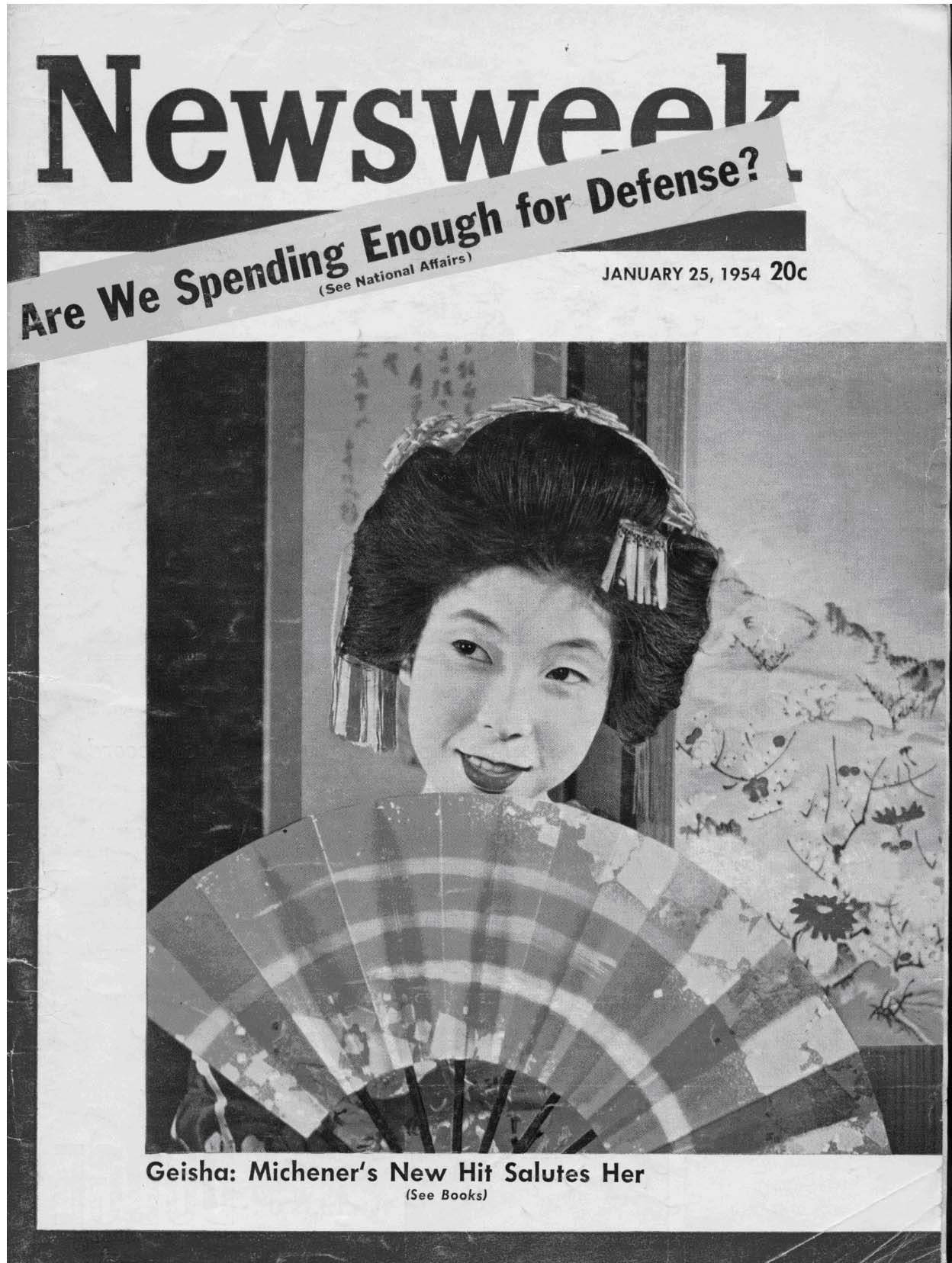
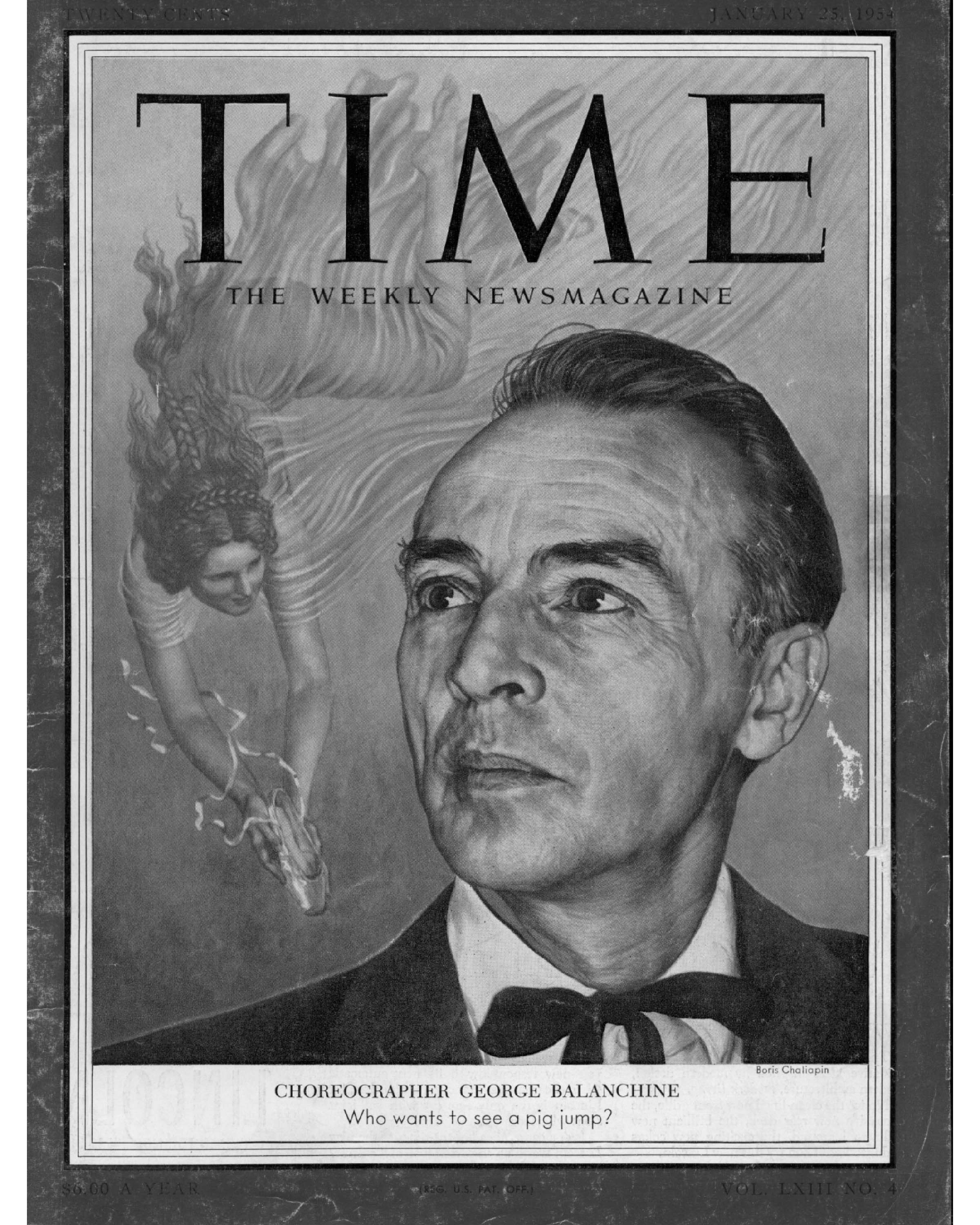
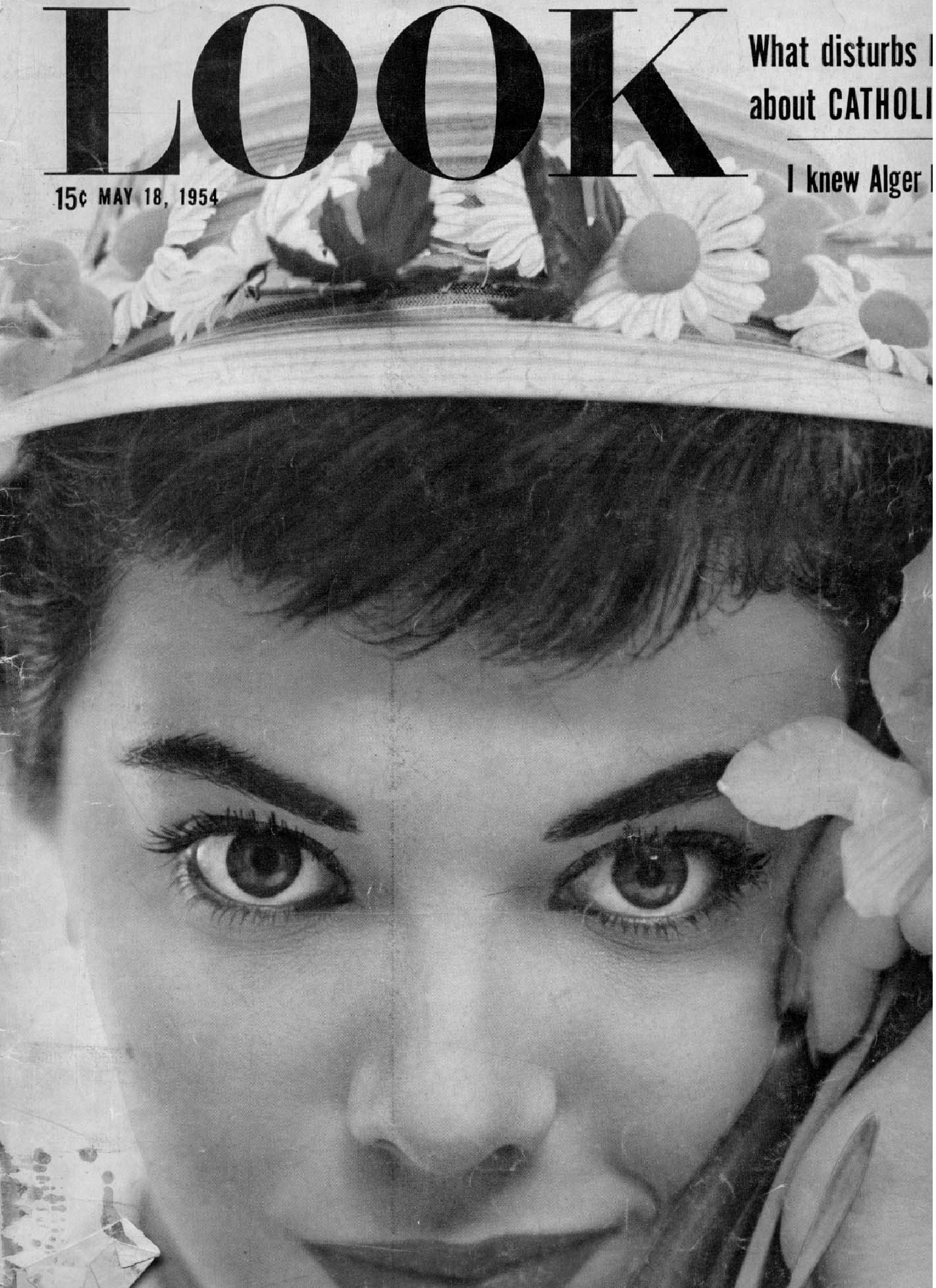
Local newspapers and publications were more generally in support of the home economics program on campus. The Eastern Alumnus, a alumni sponsored monthly newsletter, ran stories about David “North” in their June, March, and December editions in 1954. Each article had a positive feel, in which the alumni supported the campus and faculty. Dr. Schmalhausen was congratulated, and a picture of David and President Buzzard was published next to the article. The people in Charleston supported what was going on at the College as well. The Charleston Daily Courier kept the community updated about the case, and refuted arguments to return David to his mother.
Dr. Haremski of State Child Welfare Division conducted an investigation into the home management baby on Eastern's campus, arguing that the situation was not normal. He sought to abolish the practice of the college to keep a live child in its care, citing the Illinois statutes requiring a license to conduct childcare in non-familial environments. As the media coverage disappeared, so did the State's case against David “North's” placement at Eastern. It was decided that although his placement was not condoned by the State, David would stay in the home management house on campus, and the investigation would end. The State determined that the College had obtained care of David by making a private agreement with his mother, and it was not a matter of State jurisdiction. David was not given up legally for adoption, nor was he considered a welfare case.
Dr. Schmalhausen continued to believe in the importance of having a live baby as part of the home economics curriculum. The next baby, Amy “North”, arrived on campus in late September 1954, absent of any State intervention. The last year the school hosted a baby in the home management houses is unclear, but the last time a baby's arrival to campus was reported by The Eastern State News was the fall of 1960. Dr. Schmalhausen eventually retired, and the house was converted for use as the Child Development Laboratory in 1967. The practice of home management houses declined from universities in the United States, and Home Economics is now considered a part of the School of Family and Consumer Sciences.
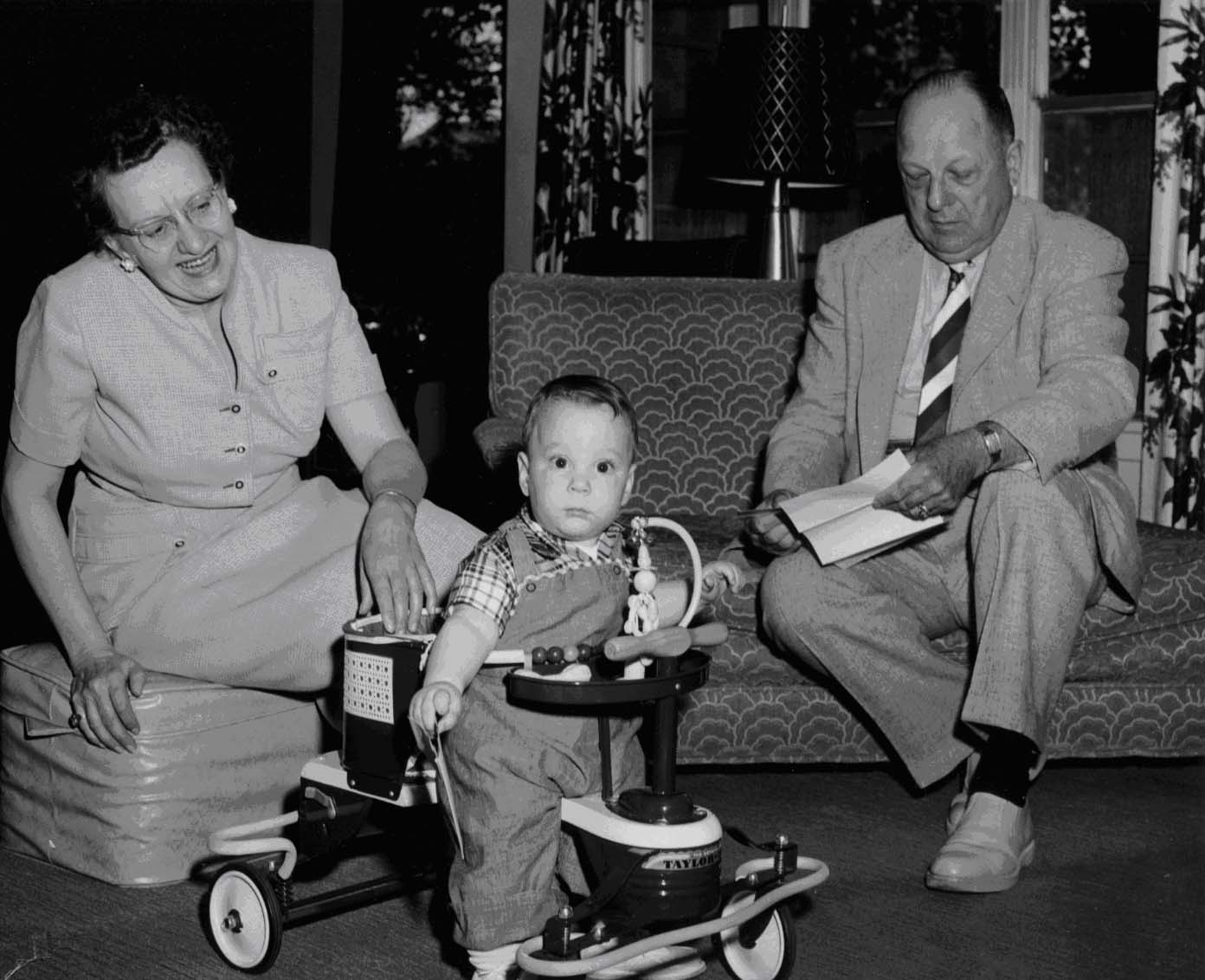
Dr. Ruth Schmalhausen, President Buzzard, and David "North"
Sources
Coleman, Charles H. “Eastern Illinois State College: Fifty Years of Public Service.” Eastern Illinois State College Bulletin No. 189 (January 1, 1950), 269, 273.
“Home Management house being used.” The Eastern State News, June 18, 1952.
Tingley, Donald F. ed. The Emerging University: A History of Eastern Illinois
University . (Charleston, Illinois: Eastern Illinois University, 1974), 13.
Black, Bob ed. “Borrowed Baby's Mother Replies to Questions in ‘Interview by Mail'.” Charleston Daily Courier February 20, 1954, afternoon edition.
“Controversy Over Home Management Baby Brings Official Frowns, Popular
Approval.” The Eastern Alumnus , March 1954: 4.
“Storm Center.” The Stars and Stripes January 1954.
“Case of the Resident Baby.” Time, January 25, 1954.
“Too Many Mamas?” Pageant, July 1954.
Morgan, Michelle. “A Look Back: The Home Management House at Eastern Illinois University.” School of Family and Consumer Sciences News and View. Charleston, Illinois, July 1, 2002.
Website created by Brenda Kropen, Historical Administration class of 2005-2006








